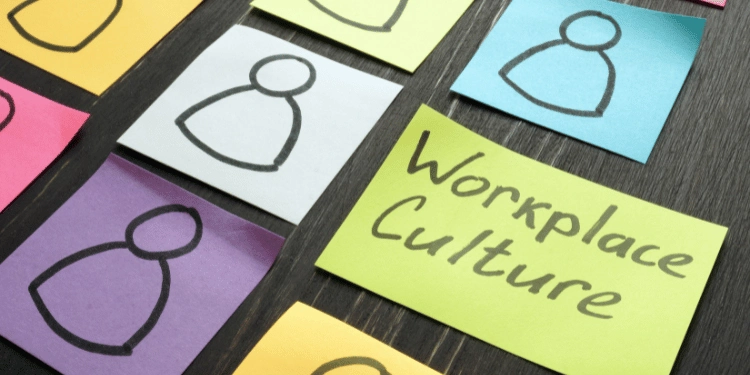Why Australian Workplace Culture Leads in Work-Life Balance: A Global Comparison
Introduction to Australian Work Culture
Australia’s workplace culture is celebrated for its ‘laidback, egalitarian’ environment, which creates an enjoyable and inclusive atmosphere while still maintaining productivity.
The distinctive blend of working hard but valuing relaxation sets Australian workplaces apart from many others globally.
This chapter will delve into the unique aspects of Australian work culture and compare them with other regions.
Australia’s Reputation for a ‘Laidback, Egalitarian’ Office Environment
Australia’s workplaces are often characterized by their informal approach and focus on equality.
This means that employees and managers work together as a team with fewer hierarchical barriers.
Unlike countries where status and rank are critical, Australian offices tend to foster a sense of shared responsibility and mutual respect.
This democratic ethos extends to the overall office atmosphere, contributing to a relaxed yet productive environment.
Humor plays a significant role in this setting, helping to break down barriers and encouraging a more interconnected workplace.
Distinctive Balance Between Productivity and Relaxation
Australians have mastered the art of balancing work with relaxation.
The standard working hours in Australia allow employees enough time to recharge and maintain a healthy work-life balance.
Regular breaks, especially the famous coffee breaks, are part of the workday, promoting not only relaxation but also social interaction and relationship building.
This coffee culture is unique in its ability to break down workplace hierarchies, creating an environment where even performance reviews might occur casually at a café.
Comparison with Global Workplace Cultures
Globally, workplace cultures can vary significantly.
For instance, many Asian countries often exhibit longer working hours and a more formal, hierarchical structure.
Lunch breaks in these regions are typically shorter and more functional, emphasizing quick meals at the desk over leisurely social interactions.
This contrasts sharply with the Australian approach, where lunches and breaks are social, relaxed periods designed to recharge employees.
The US and the UK present their own distinct contrasts with Australia.
US workplaces can be more formal, with a higher degree of respect for hierarchy, often addressed through titles rather than first names.
Similarly, in the UK, formality and long working hours can sometimes overshadow the laidback, egalitarian spirit seen in Australian workplaces.
Understanding these differences highlights why Australia’s unique office culture is effective in creating a harmonious balance between work and personal life.
This cultural approach not only improves employee satisfaction but also boosts productivity, by ensuring that workers are well-rested and motivated.
Moving forward, we will look in-depth at various aspects of the Australian work structure and how its elements contribute to this globally admired work-life balance.
 Australian work environment is a reference
Australian work environment is a reference
Working Hours and Structure
Standard Working Hours
Australia is renowned for its balanced approach to working hours, typically adhering to a standard 32-40 hour work week.
The official cap is around 38 hours, not including any overtime.
This structure contrasts markedly with many Asian countries, where longer workweeks are customary.
In China, the workweek ranges between 40 and 46 hours, while in India, a six-day, 48-hour workweek is frequently the norm.
Such differences underscore the comparatively relaxed workload in Australian workplaces, which supports the broader work-life balance for which the country is known.
Flat Organizational Hierarchy
What sets Australian work culture apart is its commitment to egalitarianism and fairness, something reflected in its flat organizational hierarchy.
This structure minimizes overly rigid or authoritarian systems, promoting a work environment where employees feel more comfortable expressing their opinions and engaging in open dialogue.
This is in stark contrast to countries like the US and the UK, which often exhibit steeper hierarchical structures, making informal communication across different levels of management less commonplace.
Workplace Relationships
Another distinctive element of Australian work culture is the less formal nature of workplace relationships.
In Australia, it is common for employees to address their managers and senior colleagues by their first names, fostering a more relaxed and approachable atmosphere.
This informal culture helps break down barriers and encourages a more collaborative and less intimidating work environment.
In the US and the UK, however, more formal titles and hierarchical distinctions are maintained, which can make workplaces feel hierarchical and less egalitarian.
This foundational structure of working hours and organizational hierarchy in Australia sets the stage for deeper social connections and a more inclusive work environment, aspects that will be explored in subsequent sections.
Break Culture and Social Connection
Importance of Proper Lunch Breaks
One of the cornerstones of Australian work culture is the emphasis on taking proper lunch breaks.
Unlike some countries where lunch is often a hurried affair eaten at one’s desk, Australians view lunch breaks as essential for relaxation and recharging.
Taking the time to enjoy a meal with colleagues not only helps employees feel rejuvenated but also fosters better workplace relationships.
This break is a moment to unwind before diving back into tasks, ensuring that employees return to their work feeling refreshed.
Herman Tse, a professor at Monash Business School, highlights the importance of this practice, noting that it is crucial for maintaining a good work-life balance.
By taking time to relax and recuperate, Australian workers can maintain higher levels of productivity and morale throughout the day.
This stands in stark contrast to some Asian countries, where lunch is often consumed quickly, and employees are expected to continue working with minimal downtime.
Unique Coffee Culture
An integral part of Australian break culture is the nation’s distinctive coffee culture.
The morning coffee ritual is more than just grabbing a caffeine fix; it’s an opportunity for social interaction and building connections.
Coffee breaks act as a social equalizer, erasing hierarchical lines as employees, regardless of their position, bond over shared conversations.
It’s not uncommon to see senior managers and junior staff having performance reviews or casual catch-ups at a local café, highlighting the informal and egalitarian nature of the Australian workplace.
According to Tse, this coffee culture is unique to Australia and plays a vital role in creating a strong sense of community within the workplace.
The experience of sipping a hot coffee, engaging in light-hearted banter, and sharing insights helps in breaking down barriers and fostering an inclusive environment.
This is distinct from work cultures in countries like South Korea, where coffee is often consumed quickly and at a lower temperature due to time constraints.
Contrast with Asian Countries’ Fast-Paced Break Culture
The break culture in Asian countries stands in stark contrast to that of Australia.
In many Asian workplaces, lunch breaks are brief, often with an expectation for employees to eat at their desks and continue working.
Social pressure in countries like Japan can even discourage taking the legally entitled 45-minute breaks, favoring continuous work instead.
In China, while a two-hour break may be common, it is swiftly followed by a power nap intended to boost productivity rather than relaxation.
This fast-paced approach to breaks showcases a focus on maximizing work time and output, often at the expense of relaxation and social connection.
The Australian practice of allowing longer, more relaxed breaks emphasizes the cultural value placed on work-life balance and employee well-being.
Workers are encouraged to take time out to refresh themselves properly, enabling them to maintain high productivity levels without feeling overwhelmed.
This cultural disparity in break practices is a vivid illustration of how different societies prioritize work and relaxation.
Australia’s approach, integrating relaxation into the workday, supports not only individual well-being but also strengthens workplace relationships and overall team cohesion.
This focus on proper breaks and social interaction is just one aspect of the broader Australian dedication to maintaining a healthy work-life balance, a theme that resonates through various facets of their workplace culture.
As we continue exploring, other elements like leave entitlements further underscore Australia’s commitment to this balance.
Leave Entitlements and Work-Life Balance
Australia’s approach to work-life balance, highlighted by its leave entitlements, is both unique and commendable.
On average, Australian employees are entitled to four weeks of annual leave each year.
This generous allocation underscores the nation’s commitment to ensuring employees can rest, recharge, and spend quality time outside of work.
In comparison, many other countries offer significantly less leave, creating a stark contrast in work-life balance priorities.
Comparison with Nordic Countries
Though Australia’s leave entitlements are generous, Nordic countries like Finland, Sweden, Denmark, Iceland, and Norway outshine many others in this domain.
Workers in these countries often enjoy up to 30 days of annual leave.
This extensive leave is part of a broader work-life balance philosophy that also includes fair wage distribution and flexible working hours, making Nordic workers some of the happiest globally.
The Limited Leave Policies in the US and Asia
The US presents a different picture regarding leave entitlements.
There is no national mandate for paid holidays in the US; the responsibility falls on individual businesses to set their leave policies.
As a result, US workers usually receive an average of just 10 days of annual leave.
This limited leave is a significant factor that affects work-life balance negatively.
Asian countries also tend to offer less generous leave policies.
In China, for example, leave is tied to the length of service, ranging from five to ten days.
Similarly, in Japan, leave varies from 10 to 20 days, depending on the employee’s duration with the company.
Workers in Vietnam are entitled to 12 days, while Indian workers might get 12 to 15 days.
These figures highlight a significant difference in how work-life balance is perceived and prioritized across different regions.
The Impact on Employee Well-Being
Australia’s four weeks of annual leave contribute significantly to the well-being of its workforce.
Employees are more likely to take time off to rest, resulting in higher productivity levels and lower burnout rates.
This approach is rooted in the broader cultural value of maintaining a healthy work-life balance, further supported by fair labor practices and inclusive work environments.
Understanding the interplay between humor, diversity, inclusion, and anti-discrimination efforts is crucial as we delve deeper into Australian workplace culture and values.
Workplace Culture and Values
The Role of Humor
One of the defining traits of Australian workplace culture is the prevalent use of humor.
In many ways, humor helps to create a less formal and more connected environment.
From banter over team meetings to light-hearted jokes during breaks, Australians see humor as a way to break the ice and build relationships within the workplace.
This approach makes the office feel more like a community instead of a rigid hierarchy.
Interestingly, humor is not universally embraced in workplaces around the globe.
In countries like South Korea, jokes at work can be seen as unprofessional.
They prefer a serious demeanor, reflecting a strong work ethic.
In contrast, Australians appreciate humor as it promotes a relaxed atmosphere where colleagues are more comfortable sharing personal stories and experiences.
Diversity, Inclusion, and Anti-Discrimination
Australia’s work culture also places significant emphasis on diversity, inclusion, and anti-discrimination.
Companies are increasingly adopting policies that focus on creating an inclusive environment.
Under the Labor government’s initiatives, workplace rights and anti-discrimination measures are highlighted to ensure everyone feels valued regardless of their background.
Organizations have genuinely moved towards embracing these values as part of their corporate ethos.
This shift not only benefits the employees by creating a supportive environment but also enriches the company by bringing diverse perspectives and ideas to the table.
Work-Life Balance as a Cultural Value
One of the standout features of the Australian workplace is its strong emphasis on achieving a healthy work-life balance.
Employees are encouraged to enjoy their life outside of the office, promoting overall well-being.
Companies offer flexible working arrangements like remote work options or flexible hours, making it easier for employees to accommodate their personal needs and responsibilities.
The notion of work-life balance is embedded deeply in the Australian work culture.
Australians generally feel entitled to their four weeks of annual leave and are likely to use it, a stark contrast to some countries in Asia and the US, where limited leave policies are the norm.
This focus on work-life balance is not just a policy; it’s a cultural value that aims to enhance employee satisfaction and prevent burnout.
As we continue to explore the aspects of Australia’s work culture, it’s worth noting the impact of these values and practices on overall employee morale and productivity.
By fostering humor, inclusivity, and work-life balance, Australian workplaces create an environment where employees are motivated, engaged, and genuinely happy.







